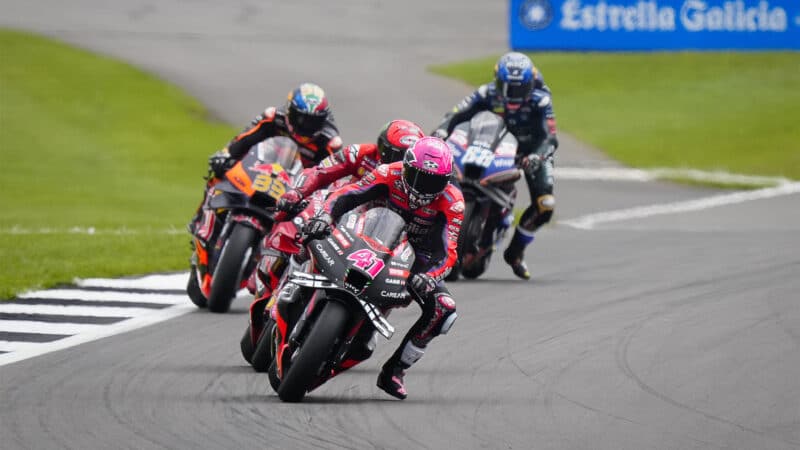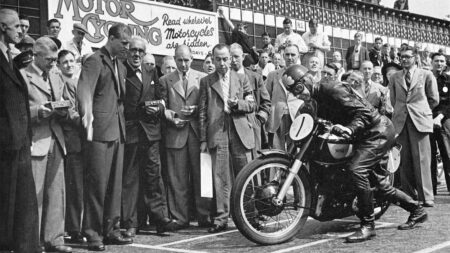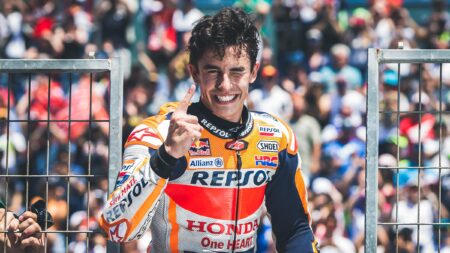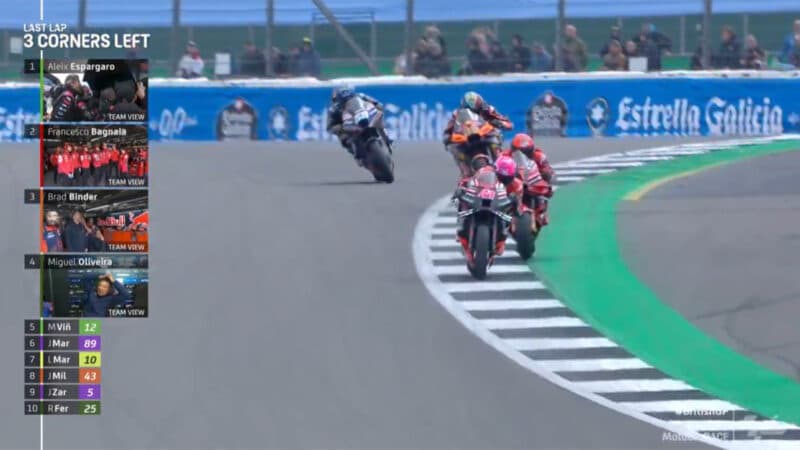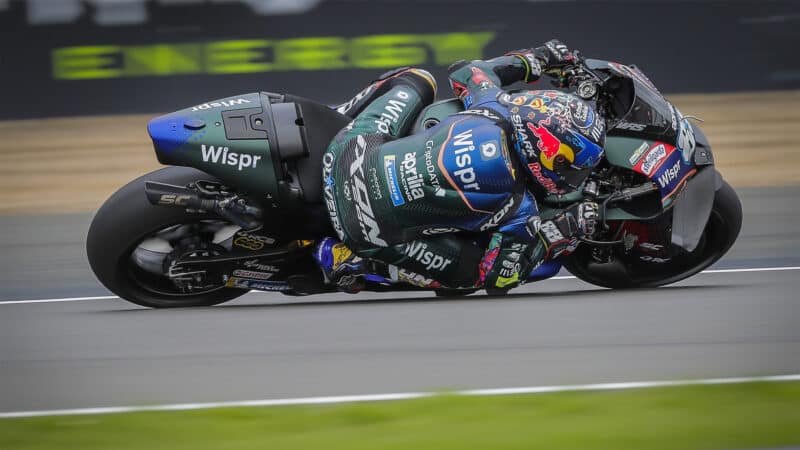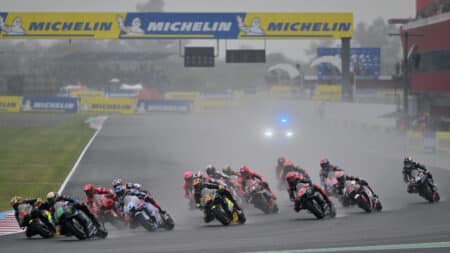World champion Pecco Bagnaia deserves a special pat on the back because he rode a superb race in the trickiest conditions. The 2023 series leader led pretty much all the way, even when spots of rain hit his visor. When that happens the worst place to be is in the lead, because if the rain intensifies in one part of the track you will be the first to reach that slippery piece of asphalt and you’ll most likely crash, while the riders behind can release the brakes, run wide and carry on.
So it took a huge amount of risk, commitment and judgement from Bagnaia, who as someone recently said, “Pecco doesn’t look brave, but he is f**king brave.”
Finally, however it wasn’t enough. The leading group were incredibly closely matched: Bagnaia’s Ducati, Binder’s KTM and the Aprilias of winner Espargaró and team-mate Maverick Viñales.
When the rain came Binder seemed the most likely winner, because he seems more willing to hang it out than most, like when he swept past both Aprilias in one go at Stowe with a few laps to go.
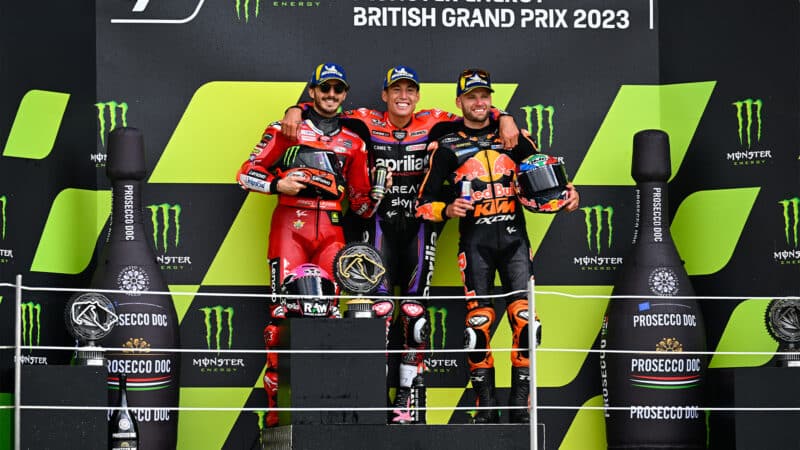
Bagnaia, Espargaró and Binder all had reason to be happy after enjoying a high-adrenaline skirmish with each other
But finally it was Espargaró who triumphed, his second MotoGP win from his 310th GP start.
This didn’t come as too much of a surprise. Two years ago the Spaniard scored Aprilia’s first-ever four-stroke MotoGP podium and last year he was clear favourite to win until he smashed himself up in a huge practice highside. The next day he limped home in ninth, while Viñales nearly beat Bagnaia, taking the flag four-tenths down, the closest he’s got to victory with Aprilia.
Aprilia’s RS-GP goes especially well at fast, flowing circuits, like Silverstone and Termas De Rio Honda, where Espargaró scored Aprilia’s first MotoGP victory last year, because the bike doesn’t like straight-line braking at stop-and-go tracks and works best on layouts where low-gear acceleration exiting slow turns isn’t the biggest deal.
Also, Aprilia wasn’t sleeping during MotoGP’s five-week summer break – and a minor but crucial aero update played an important part in Espargaró’s victory. Also vital was an improved clutch and launch control system, because Aprilia ruined several races earlier this year through poor starts. At Silverstone on lap one Espargaró went from 12th to sixth!
But in the end it was the aero upgrade that helped Espargaró make the winning difference, because tiny improvements mean everything in MotoGP now.
A small wing protruding from the lower rear of each side of the RS-GP’s fairing increases rear downforce, without creating the extra drag of the seat wing, which has appeared only a few times this season. These small wings deliver more downforce, especially when the bike is leant over, and create a vortex.
What does this do? The biggest thing in MotoGP right now is getting the motorcycle turned at the apex as quick as possible. Because if you can get the bike around the apex quickly you will have the bike pointing out of the corner sooner, so you can pick up the bike onto the fatter part of the rear tyre earlier and use more throttle for faster corner exits.
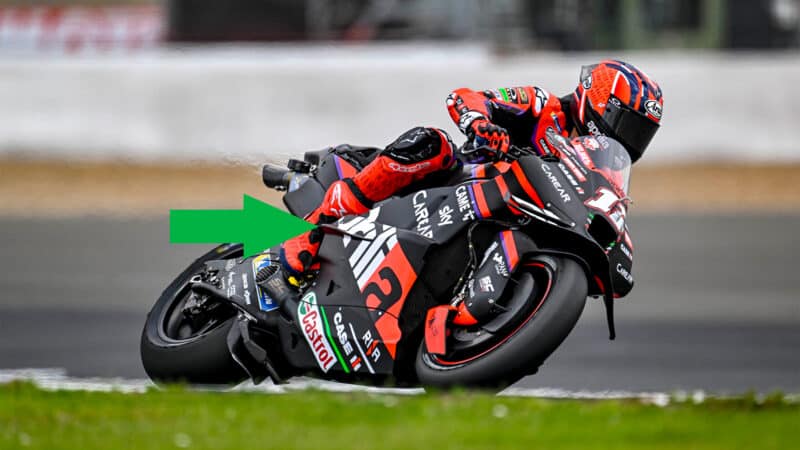
Aprilia’s new downforce wing is small but it increases grip at high lean to get better turning and therefore faster corner exit acceleration
And this is exactly what Espargaró did on the final lap. Accelerating out of the super-fast Woodcote right-hander for the last time he gained several metres on leader Bagnaia and then got much better drive exiting Copse, so could draw alongside the Ducati and steal the inside line into the high-speed Becketts left.
Espargaró was clever enough to resist attacking Bagnaia on the brakes, because Marco Bezzecchi had proved how dangerous this can be, especially at high speed.

